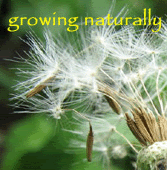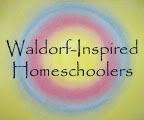
We made the most delicious garlic bread from garlic that we wild-crafted last week! Yum! I always look forward to summer and early autumn when we do hour herbal identification walks (instructions at: http://waldorftv.weebly.com/e-books.html)
We learn so much, but my children also eat healthier food than they eat all year! It is amazing what children will eat when they get to pick it off the ground in the "wild woods"! Both my children balk when I put salad on the table (although Sofi likes tomatoes, carrots and fruits and berries and Sunii likes other veggies and orange juice) - they complain that salad is GREEN and leafy and yuck!
However, they have no problem foraging clover, mint, chives, dandelion leaves, and sorrel and eating them by the handfuls! As an added bonus we also have raspberries and mulberries on our nature trail.
Other things we learn from our herbal identification walks:
1. Botany: The basic cornerstone of every botany lesson is the shapes and kinds of leaves you find in nature, how to identify plants and how to classify them. This is also the basic cornerstone of herbal identification. However, it is a lot more fun to identify things you can eat and use, rather than drawing shapes and memorizing names on paper.
2. Observation skills: We learn how to look at nature around us in a deeper way. We often see plants and animals we would not have seen otherwise.
3. Healing skills: We have learned how to heal poison ivy with a few common herbs, what to put on a cut when you are hiking in the wild and what you can eat for a stomach ache, spider bite or bee sting.
4. Respect for Nature: We learn how useful nature really is. All that "green" around us is not just "greem stuff" anymore. It is valuable for its healing properties, taste and beauty. We learn how to wildcraft with respect.
5. Nutrition: We learn and experience the nutritional value of herbs and plants.
6. Economy: We calculate and understand how many things are "free" in life, and how we don't have to buy expensive herbal mixtures to heal or eat. They are usually in our back yard!
7. Biographies and History: We learn about some of the historical figures who wrote journals and poems about nature.
8. Storytelling: We learn stories that teach us about the herbs.
9. Verses: We learn verses that teach us about the herbs.
10. We create books with drawings that help us learn more careful drawing techniques.
This is certainly one of my favorite lessons of the year!
Join us in our adventures with our new E-book "Herbal Identification with Kids" at:
http://waldorftv.weebly.com/e-books.html)
Blessings & Health,
Kristie
www.Earthschooling.com
Friday, June 26, 2009
The Benefits of Herbal Wildcrafting for Kids
Posted by
Kristie Karima Burns, MH, ND
at
8:00 AM
![]()
Labels: E-Books, Herbs, Parent-Child Herb Class
Subscribe to:
Post Comments (Atom)










5 comments:
Kristie, I really love this post. Wildcrafting is such a wonderful learning experience, and it can be magical, too! I love that you wildcrafted some garlic. Yummy.
Great post, I agree completely. My girls love to identify & eat wild food. They call it "fairy food" because it's what fairies would eat, leaves, seeds nuts & berries. So much fun.
Fairy food! Love it! Perhaps that's why my little daughter (10) loves it so much...she is always wanting to be with the fairies.
Thanks for all the information on
wildcrafting. I look forward to looking at your weebly place. I love homemaking at wildcrafting takes it to a new level.
Thank you for visiting forest! I love homemaking too!
Post a Comment